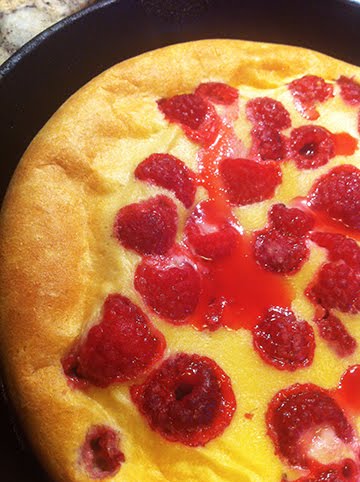 King Cake, or Galette des Rois is a traditional sweet eaten in Paris for the feast of Ephiphany, Janury 6th, but also is eaten for most of January as too much of a good thing is, indeed, wonderful. I decided to make mine for New Years Eve since there would be Champagne and enough people to make it worth baking.
King Cake, or Galette des Rois is a traditional sweet eaten in Paris for the feast of Ephiphany, Janury 6th, but also is eaten for most of January as too much of a good thing is, indeed, wonderful. I decided to make mine for New Years Eve since there would be Champagne and enough people to make it worth baking.This recipe is from the Tartlette blog if I remember correctly, so I thank Helene for it. It is not her fault that mine was less than stellar...if you read through you will find the unusual thing that happened to me.
Happy New Year y'all!

Galette des Rois
- 500 grams (17 2/3 ounces) all-butter puff pastry, thawed if frozen
For the crème d'amande:
- 125 grams (9 tablespoons) unsalted butter, softened
- 125 grams (1/2 cup plus 2 tablespoons) sugar
- 110 grams (1/2 cup plus 3 tablespoons) almond meal (= finely ground almonds - see notes at end)
- 8 grams (1 tablespoon) corn starch
- 2 large eggs
- 1 drop almond extract
- 1 tablespoon rum
For the eggwash:
- 1 egg yolk beaten with 1 tablespoon water
Accessories:
- 1 porcelain trinket or dried bean
- a paper crown
Serves 6 to 8.
1. Prepare the crème d'amande.
Beat the butter until creamy, but avoid incorporating air into it. In a bowl, combine the sugar, almonds, hazelnuts, corn starch, and salt. Stir with a whisk to remove any lump. Add to the creamed butter and mix until smooth. Add the almond extract and orange flower water, then the eggs, one at a time, mixing well between each addition. Cover and refrigerate for an hour or overnight.
2. Roll out the puff pastry.
Divide the puff pastry in 2 equal pieces, and roll each one out to form a rough circle a little larger than 30 cm (12 inches) in diameter. Use a sharp knife and an upturned plate of the right dimension to cut a neat 30-cm (12-inch) circle out of one, and a slightly larger one with the other, adding, say, 6 mm (1/4 inch) all around the edge of the plate.
3. Assemble the galette.
Place the smaller of the two circles on a piece of parchment paper or a silicone baking mat. In a small bowl, combine the egg yolk with a tablespoon water (or milk, if you have it handy) until smooth. Using a pastry brush, brush the outer rim of the dough lightly with the eggwash by a width of about 2.5 cm (1 inch). Make sure not to wet the actual edge of the dough, or it will impede its rise.
Pour the crème d'amande in the center and spread it out inside the eggwash ring with a spatula.
Place a porcelain fève, a dried bean, or the trinket of your choice in the crème d'amande -- not in the center but closer to an edge, or your knife will keep running into it when you divide the galette. And if it is an elongated shape, make sure to orient it straight toward the center of the galette, again, to minimize the possibility of you hitting it with your knife. Press it down gently to bury it.
Transfer the second round of dough precisely on top of the first, smooth it out gently over the crème d'amande to remove any air pocket, and press it down all around the sides to seal.

4. Score the galette.
Using the back of the tip of your knife (i.e. the dull side), draw a decorative pattern on top of the galette: a diamond-shaped grid, optionally with double or triple lines, a flower pattern. I chose to make a sun pattern ...sort of like parentheses around the cake... you start from the center and draw an arc to reach the edge of the galette in a single, smooth gesture, exercising just enough pressure to score the dough without piercing it. You then turn the galette ever so slightly, draw a similar arc nested in the first one, and repeat until the entire galette is scored.
Brush the top of the galette lightly with the eggwash: again, make sure it doesn't drip over the edges, or the eggwash will seal the layers of the puff pastry in this spot and it won't develop as well. Let it rest a minute then brush it lightly again with the eggwash.
 Using the tip of your knife, pierce holes in the top dough in the center.
Using the tip of your knife, pierce holes in the top dough in the center.Transfer to a rimmed baking sheet or a tart pan with a removable bottom, and refrigerate for 1 hour. (Alternatively, you can place the galette in the freezer at this point, on the baking sheet or pan, and bake it the next day. Although I haven't tried it, I'm sure you could prepare it up to a week or so in advance: once the galette is thoroughly frozen, transfer it to a tightly sealed bag to avoid freezer burn.)
5. Bake the galette.
Preheat the oven to 180°C (360°F); if the galette was in the freezer, take it out while the oven preheats. Insert the galette in the middle of the oven and bake for 30 minutes (35 if it was frozen), until puffy and golden brown.
Place on a rack to cool completely (it will settle as it cools) and serve at room temperature. (Some people prefer it slightly warm, so they reheat it slightly in a warm oven before serving.)
The traditional pairing is with Champagne or hard cider. We had Champagne for toasting the New Year, so this cake went well with the Champagne. It would have been even better if I hadn't turned off the oven by mistake when I put the cake in. One of the joys of baking in a strange (to me) kitchen with a new and completely unknown stove! I also didn't put it on parchment paper (nor foil) and put it on a baking sheet without a rim, so the filling melted and spilt on the oven bottom, causing lots of smoke. My brother-in-law took a video of me and his daughter fanning the smoke out the window...she with a kitchen towel, me with a paper grocery sack...called it the new areobics! Once the oven was hot again, along with the smoke, the cake rose some and browned on top but it was far from the puffy, flaky pastry that I had been anticipating. I had used some of the left over filling and scraps of puff pastry to make little scrap cakes. They actually became puffy and flaky and were quite good.
 Cut the galette into servings...we cut it into 9 pieces...and be sure to mention that there is a bean or other feve in one of the servings so that they will know what to expect. If your guests are unfamiliar with the tradition I think it makes it even more fun for them to look for the fève which may be hiding in their slice.
Cut the galette into servings...we cut it into 9 pieces...and be sure to mention that there is a bean or other feve in one of the servings so that they will know what to expect. If your guests are unfamiliar with the tradition I think it makes it even more fun for them to look for the fève which may be hiding in their slice. It helps if they know to look. Our winner wasn't in the room when the slices were passed around and said that if we had used a whole almond as she sometimes did when making the New Orleans version that she would have eaten it and never mentioned it...so no one would have known who to crown as king or queen! Good thing it was a kidney bean which seemed odd to her.
It helps if they know to look. Our winner wasn't in the room when the slices were passed around and said that if we had used a whole almond as she sometimes did when making the New Orleans version that she would have eaten it and never mentioned it...so no one would have known who to crown as king or queen! Good thing it was a kidney bean which seemed odd to her.Whoever finds it is king/queen for the day, receives a paper crown. My older sister was our queen for the night and looked lovely in the gold paper crown I created from cardboard and wrapping paper. Hopefully I'll have photos later in January (now added). I didn't want to wait until I was home because the offical day to do this cake, the Epiphany, is in just a few days (January 6th).
Note: You can also grind your own almonds to make almond flour or meal and that's what I did. I used sliced almonds and 2 tablespoons of the sugar in a food processor and it worked well.









Elle, I've made a royal almond cake before and loved it! I need to try your recipe for it soon!
ReplyDeleteThat said, your Xmas dinner sounded extraordinary (I'll write you back asap). I just back online full time after my crash, so I'm all over the place catching up lol Happy New Year, my friend!
Sounds just lovely! My Dad's bday is on the 6th too! Happy Christmas and a blessed New Year dear Elle!
ReplyDeleteHappy New Year, Elle.
ReplyDelete